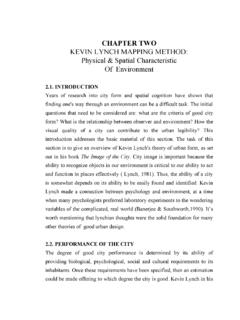Transcription of Reflective Listening
1 1 1994 Neil Katz & kevin McNulty Reflective Listening Introduction Listening is following the thoughts and feelings of another and understanding what the other is saying from his or her perspective. Reflective Listening is a special type of Listening that involves paying respectful attention to the content and feeling expressed in another persons communication. Reflective Listening is hearing and understanding, and then letting the other know that he or she is being heard and understood. It requires responding actively to another while keeping your attention focused completely on the speaker. In Reflective Listening , you do not offer your perspective by carefully keep the focus on the other s need or problem. Thus Reflective Listening consists of a step beyond what is normally thought of as Listening : 1.
2 Hearing and understanding what the other person is communicating through words and body language to the best of your ability. 2. Responding to the other person by reflecting the thoughts and feelings you heard in his or her words, tone of voice, body posture, and gestures. Reflective Listening is a kind of checking out process to determine that both you and the speaker understand what he or she is trying to say. The reflection allows the other to verify that you are hearing accurately. In order for this process to be effective, you must be able to perceive accurately what the other is experiencing and communicating. Understand the communication at both the content and feeling level; and, if there is a problem, commit to be present to the other while he or she works through that problem and arrives at a solution.
3 When you can answer the question, What is going on with this person right now? and have your answer verified, then you are Listening with precision. Reflective Listening has more than one purpose. You can use Reflective Listening to help you understand what the speaker is saying. It also allows the speaker to feel heard. Reflective Listening can help the speaker achieve his or her outcomes. Listening can help the speaker clarify his or her thoughts on some matter, decide on a course of action, or explore his or her feelings to some new depth. It is the useful for both speaker and listener. Reflective Listening is useful in a variety of situations. You can use Listening to help when another person is experiencing a difficulty or problem. Also, the communication skills of problem solving, assertion, conflict management, and negotiation all require the extensive Listening .
4 In social situation Listening can create a climate of warmth between people. Listening is also important for handling resistance or anger in others. It is needed to settle disputes. Leading group discussions/conversations require effective Listening as well. Directions can be clarified by Listening . In general, Reflective Listening is useful in conducting any difficult conversations with another. 2 1994 Neil Katz & kevin McNulty The Reflective Listening process offers a number of benefits: 1. It lets the speaker know that she or he has been heard, understood, card for, and supported. 2. It gives the other feedback on what he or she said and how it came across. 3. It allows you to check your own accuracy in hearing what the other has said. 4. It avoids the illusion of understanding.
5 5. It helps prevent the mental vacation in which you are inattentive during the conversation. 6. It helps the other focus on self, vent, sort out issues, express feeling, and deal more effectively with emotions. 7. It allows the other to move to deeper levels of expression at his or her own pace. 8. It helps the other to think and articulate more clearly. 9. It helps the other arrive at a solution to his or her own problem. 10. It helps you clarify what you are expected to do. 11. It helps you deal effectively with the issue, problem and/or needs the other raised. Reflective Listening can be grouped into two skill clusters: Attending skills- the skills of non-verbally communicating that you are empathetic with the other. This skill area involves all the elements of your physiology: eyes, posture, etc.
6 You try to communicate that there is rapport between you and the other. These skills are used throughout the Reflective Listening process, as appropriate. Reflective skills- the skills of reflecting or expressing to the other the essence of the content and feelings you hear as well as summarizing larger segments of what is said. These responses are used throughout the exchange whenever a significant segment of the communication is heard. Attending Skills Attending is giving your physical and psychological attention to another person in a communication situation. Effective attending conveys non-verbally that you are interested and are paying careful attention to the other. In our culture effective physical attending takes place when you adopt a posture of involvement that includes facing the person speaking to you, establishing good eye contact, avoiding distractions, maintaining an interested silence, and arranging to have an appropriate environment for the conversation.
7 The following are several components of attending: Contact: Eye contact is one way of indicating interest in the other person, because the eyes are one of the key modes of communication. This does not mean that eye contact must be a fixed stare. If you are honestly interested and at ease, you will look naturally at the other person throughout the communication. Another element of contact is the distance between yourself and the other person. It is important to base this on the 3 1994 Neil Katz & kevin McNulty comfort level of the other person. Some experimentation is usually necessary before two people discover the most comfortable distance between themselves. Gestures: A great deal is communicate by body movements. If you become fidgety, drum your fingers, cross your arms, or sneak glances at your watch while Listening , you may be conveying an unintended message to the other person.
8 The key is to only use gestures consistent with what is being communicated. Environment: The environment, or setting, should support the communication. A Space which promotes privacy for undisturbed conversations is essential. Consider removing barriers between yourself and the person you are Listening to (such as a large table that comes between you, a car door you might be leaning on, or a crowd that happens to surround you at the moment). If that is not possible, choose an alternate space or a more appropriate time to communicate. Interested Silence: A period of active, attentive silence serves as a gentle nudge to the other to move deeper into the conversation. It allows the other time to think and reflect and then comfortably proceed at his or her own pace.
9 The speaker may pause and you, the listener, can attend without having to say anything. Giving the speaker time to experience and explore the feelings that churn up from within often enables him or her to explore their feelings at a deeper level. Silence is particularly useful in situations of loss or grief, such as the death of a loved one or a significant personal loss. Appropriate silence is useful in helping the other talk about a difficult problem. The primary message in attending is that both your physical presence and what you say matter. Always adjust the intensity of your attending to the other s level of comfort. Keep focus on the other in attending and responding. Keep in mind that these generalizations about attending are only true in our culture. If what you do when you are attending doesn t seem to be comfortable for the other, then vary your behavior until it achieves the response you desire.
10 In general, take your cues from the speaker. If he or she seems to want to be face-to-face with full eye contact, do your best to maintain it. If sitting side-by-side is more comfortable for the other, arrange to do that instead. The easiest route to good attending is to be as empathetic as you are able and then attend and maintain rapport with them. The message, I am attending will be communicated. Reflecting Skills Reflecting skills are the checking out process. In responding to the other you are expressing the essence of both the content and the feeling the other has communicated to you. As the listener, your response is short, succinct, and stated in your own words. It is important to check out and verify your accurate perception of small segments of another person s communication.














